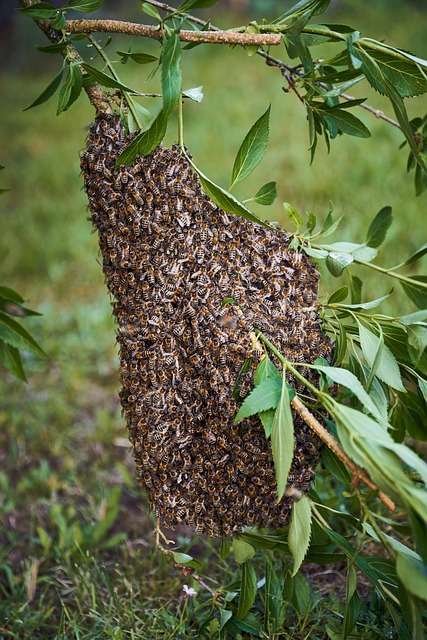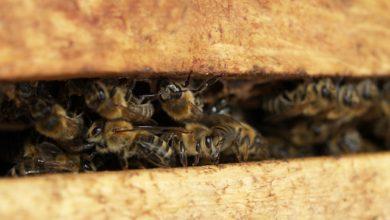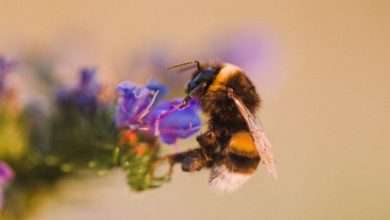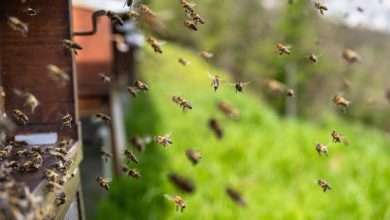It’s Almost Swarm Season – Time to Put Out Swarm Traps

Swarm season is an exciting yet challenging time for beekeepers. It is the time when honeybee colonies reproduce and split, with the old queen leaving the hive with a large portion of the worker bees to find a new home.
This natural phenomenon is a crucial part of bee behavior and biology, but it can also be a stressful time for beekeepers. However, with the use of swarm traps, beekeepers can effectively manage and capture swarms, preventing them from becoming a nuisance or causing harm.
In this article, we will delve into the importance of swarm traps, the behavior of swarms, the selection and placement of swarm traps, how to attract swarms to traps, and finally, how to manage and collect swarms.
Swarm Season
Swarm season is a time of year when honeybee colonies are most likely to divide and create a new colony through swarming. This typically occurs in the spring and early summer months when the population of bees in a hive is at its peak and resources are plentiful. During this time, beekeepers need to be proactive in managing swarms to prevent them from leaving their hives and potentially causing a nuisance to nearby residents.
Importance of Swarm Traps:
- Swarm traps are essential tools used by beekeepers to capture swarms of bees that are looking for a new home. These traps are usually baited with pheromones and placed in strategic locations to attract swarming bees.
- By using swarm traps, beekeepers can prevent swarms from leaving their hives and potentially help save the honeybee population by establishing new colonies in controlled environments.
Benefits of Using Swarm Traps:
- One of the main benefits of using swarm traps is that they allow beekeepers to capture swarms without causing harm to the bees. This is especially important for maintaining a healthy bee population.
- Swarm traps also provide an opportunity for beekeepers to increase their hive numbers and honey production by capturing swarms and introducing them into their own hives
Importance of Being Prepared for Swarm Season:
Being prepared for swarm season is crucial for beekeepers to effectively manage swarms and prevent them from becoming a nuisance. By putting out swarm traps ahead of time and regularly checking them, beekeepers can increase their chances of capturing swarms and maintaining a healthy bee population.
Understanding Swarm Behavior
Understanding swarm behavior is crucial for beekeepers to effectively manage their hives and prevent potential issues.
Why do bees swarm?
Bees swarm as a natural means of reproduction and expansion. When a colony becomes overcrowded, the queen bee will leave the hive with a group of worker bees to find a new location to establish a new colony. This process helps bees to ensure their survival and adapt to changing environmental conditions.
When does swarm season typically occur?
Swarm season typically occurs during the spring and early summer months when the bee population in a hive is at its peak. Warmer temperatures and blooming flowers also play a role in triggering swarming behavior.
What attracts bees to swarm traps?

Bees are attracted to swarm traps by pheromones released by the queen bee. Additionally, swarm traps that mimic the natural cavity of a tree or hive are more likely to attract swarms looking for a new home.
How to recognize signs of an impending swarm
There are several signs that indicate an impending swarm, including the presence of queen cells, increased drone population, and reduced honey stores in the hive. It is essential for beekeepers to regularly inspect their hives and be vigilant for these warning signs.
Importance of proactive swarm management
Proactive swarm management is crucial for beekeepers to prevent the loss of a valuable colony. By regularly inspecting hives, providing adequate space for bees to expand, and using swarm traps strategically, beekeepers can effectively manage swarming behavior and ensure the health and wellbeing of their bees.
Understanding swarm behavior is key to successful beekeeping. By being knowledgeable about why bees swarm, when swarm season occurs, what attracts bees to swarm traps, how to recognize signs of an impending swarm, and the importance of proactive swarm management, beekeepers can effectively manage their hives and maintain healthy and thriving bee populations.
Selecting and Placing Swarm Traps
Swarm traps are essential tools for beekeepers to capture swarms of bees and prevent them from settling in undesirable locations.
- Different types of swarm traps available: There are various types of swarm traps on the market, including wooden traps, cardboard traps, recycled nuc boxes, and plastic traps. Each type has its pros and cons, so it’s essential to choose the right one based on your needs and preferences. Here is a video of a DIY Swarm Trap.
- What materials are needed for effective swarm traps? To make an effective swarm trap, you will need a sturdy box or container, frames with foundation or comb guides, lure or attractant, and a secure lid or cover to protect the bees inside. Make sure to use high-quality materials that are durable and weather-resistant.
- Determining the best location for swarm traps: When placing swarm traps, it’s crucial to consider factors such as the proximity to the parent colony, the height above ground level, the direction and amount of sunlight, and the availability of food sources. Bees prefer warm, sunny locations that are sheltered from wind and rain.
- Tips for proper maintenance of swarm traps: To ensure the effectiveness of your swarm traps, regularly inspect them for damage, mold, pests, or signs of bee activity. Replace old or damaged frames, clean the traps thoroughly, and replenish the lure or attractant as needed. Proper maintenance will help increase the chances of successfully attracting and catching swarms.
- Importance of monitoring and checking swarm traps regularly: Monitoring and checking your swarm traps regularly is essential to assess their effectiveness, attract bees quickly, and prevent swarms from escaping. Check the traps at least once a week during swarm season and make any necessary adjustments to increase their chances of success.
Selecting and placing swarm traps correctly is key to successfully capturing swarms and expanding your beekeeping operation. By understanding the types of traps available, using the right materials, choosing suitable locations, maintaining the traps properly, and monitoring them regularly, you can increase your chances of attracting swarms and building healthy, thriving colonies.
Attracting Swarms to Traps
When it comes to attracting swarms to traps, utilizing the right scents and pheromones can make all the difference. Bees are highly attracted to certain scents and pheromones, so understanding what appeals to them is key.
Some common scents and pheromones that attract swarms include:
- Lemongrass oil
- Beeswax
- Nasonov pheromone
To make your swarm traps more appealing to bees, consider incorporating these scents into the traps themselves. By adding a few drops of lemongrass oil or a small piece of beeswax to your trap, you can increase the likelihood of attracting a swarm.
Another effective method for attracting swarms is using bait hives. These specially designed hives are constructed to mimic the ideal living conditions for a swarm of bees. By placing bait hives in strategic locations, you can increase your chances of luring a swarm to your trap.
However, there are some common mistakes to avoid when attracting swarms. One of the biggest mistakes beekeepers make is placing traps in the wrong location. Bees are more likely to be attracted to traps that are placed in high locations with plenty of sunlight. Additionally, using old comb or contaminated frames can deter bees from entering your trap.
To increase the success rate of your swarm traps, follow these tips:
- Regularly check and maintain your traps
- Refresh scents and pheromones regularly
- Place traps in high locations with plenty of sunlight
- Avoid using old comb or contaminated frames
By following these tips and avoiding common mistakes, you can increase the likelihood of attracting swarms to your traps and expanding your beekeeping operation.
Managing and Collecting Swarms
Swarms are a natural part of beekeeping, and knowing how to effectively manage and collect them can be a valuable skill for any beekeeper.
How to safely collect swarms from traps
When collecting swarms from traps, it is essential to approach the hive with caution and wear appropriate protective gear. Using a bee brush or a gentle mist of water can help calm the bees and make them easier to handle. Carefully remove the frames containing the swarm and place them in a transport box for relocation to their new hive.
The benefits of capturing swarms for beekeepers
Capturing swarms can provide beekeepers with new colonies of bees at no cost. These swarms are often healthy and strong, making them a valuable addition to any beekeeping operation. Additionally, capturing swarms can help prevent the bees from establishing feral colonies in unwanted locations.
What to do with swarms once they are collected
Once a swarm has been collected, it is essential to transfer them to a new hive as soon as possible. This will help ensure the bees have a suitable living environment and can start building their colony. Regular hive inspections and monitoring will also be necessary to ensure the swarm is thriving and healthy.
Tips for managing multiple swarm traps
Managing multiple swarm traps can be a challenge, but with proper planning and organization, it can be done effectively. Keeping detailed records of trap locations, inspection dates, and any swarms collected will help beekeepers stay organized and manage their traps efficiently.
Regularly checking and maintaining swarm traps will also increase the chances of capturing swarms successfully.
Challenges of managing swarms and how to overcome them
Managing swarms can pose various challenges, such as aggressive behavior, queen loss, or disease outbreaks. To overcome these challenges, it is crucial to stay vigilant and conduct regular hive inspections. Being prepared with the necessary equipment, such as spare frames or medications, can help beekeepers address issues promptly and ensure the health and well-being of their swarms. Communication with other beekeepers and seeking advice from experienced mentors can also be valuable resources when facing challenges in swarm management.
Managing and collecting swarms is an essential aspect of beekeeping that requires knowledge, skill, and dedication. By following the guidelines outlined above, beekeepers can effectively capture swarms, reap the benefits of new colonies, and overcome the challenges that may arise in swarm management.
Conclusion
As swarm season approaches, beekeepers should prioritize the placement and maintenance of swarm traps to effectively manage and capture swarms. Understanding the behavior of swarms, selecting and placing traps, attracting swarms to traps, and managing swarm collection are essential components of successful swarm management.
By being prepared and proactive, beekeepers can navigate swarm season with confidence and ensure the well-being of their bee colonies.

FAQ:
What is swarm season and why is it important to use swarm traps?
- Swarm season is the time when honeybee colonies reproduce and split, with the old queen leaving the hive with a large portion of the worker bees to find a new home. Swarm traps are essential for beekeepers to manage and capture swarms, preventing them from becoming a nuisance or causing harm.
When do bees typically swarm, and how can beekeepers recognize signs of an impending swarm?
- Bees typically swarm during the spring and early summer months when bee populations are at their peak. Signs of an impending swarm include increased activity and the appearance of queen cells within the hive.
What materials are needed for effective swarm traps, and how should they be maintained?
- Swarm traps can be made of various materials such as wood, cardboard, or plastic. It is important to choose a durable and weather-resistant material and regularly monitor and maintain the traps to ensure their effectiveness in capturing swarms.
How can beekeepers attract swarms to their traps, and what are common mistakes to avoid?
- Beekeepers can attract swarms to traps by using scents and pheromones that mimic the environment of a desirable hive, such as lemongrass oil or old comb. Common mistakes to avoid include using ineffective attractants and placing traps in unsuitable locations.
What are the benefits of collecting swarms, and how can beekeepers effectively manage multiple swarm traps?
- Collecting swarms can provide beekeepers with additional bee colonies for honey production, crop pollination, or expanding their beekeeping operations. Effectively managing multiple swarm traps requires proper planning and organization to efficiently handle the collection and care of swarms.




